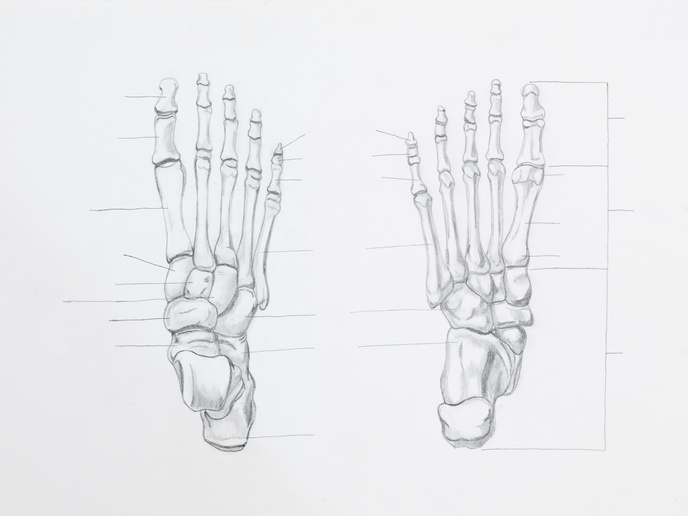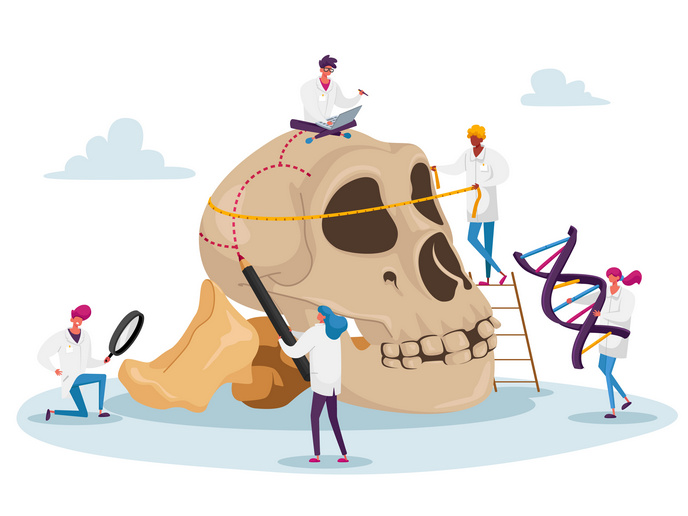Tracing steps: how studying foot bones can decode the movements of human ancestors
Throughout the course of human evolution, our predecessors transitioned from living in trees to adapting to life on the ground. The specifics of when and how this transition occurred remain unclear, and it is likely that several hominin species, namely human fossil relatives, tried different methods for moving both in the trees and on the ground. To shed light on this matter, the FOOTSTEP project(opens in new window), undertaken with the support of the Marie Skłodowska-Curie Actions programme(opens in new window), studied the foot morphology of extant great apes and humans from various populations. Through state-of-the-art whole-bone methods, the research aimed at understanding how the internal structure of their foot skeleton can reveal signals of locomotor behaviour in the past. “In addition to allowing us to better understand our evolutionary heritage, this research has implications for modern human skeletal anatomy and clinical research,” states Zewdi Tsegai, FOOTSTEP project coordinator. “The internal bone structure of the skeleton often weakens as we age, especially in women – leading to osteoporosis, which increases fracture risk. The methodological approaches used in our project can be applied in this type of clinical context to better understand fracture risk, which is common in regions such as the proximal femur and distal radius.”
Discovering hominin locomotor behaviour
To analyse the internal bone structure, traditional methods usually consider a small region of the bone. In this case, the FOOTSTEP project used a high-resolution micro-CT technique mapping an entire joint or bone to analyse bone structure in a more holistic way. The research also used a novel approach to statistically compare the bone distribution in joints across different groups. This allowed the project to examine how hominins differed from modern humans and apes in ways that likely reflect their joint loading history and locomotor behaviour. The hominin species analysed included the feet of the Australopithecus africanus, Paranthropus robustus, Australopithecus sedica, Homo naledi, Homo floresiensis and Homo habilis. With these methods, the project identified signals of locomotor behaviour in several skeletal elements of the foot, which can adopt various postures with its 26 bones. This happens because the internal bone structure of the skeleton, made from an outer layer of cortical bone and an inner mesh of trabecular bone, can remodel during and individual’s lifetime in response to mechanical loading. “In this way, the internal bone structure of the skeleton reflects how an individual behaved during their lifetime. The project found signals of grasping in the foot of great apes, who use their feet to grip branches when climbing – features that are not present in modern humans,” explains Tsegai. “Ongoing research is applying this approach to the foot skeleton of several hominin species to better understand the variability of locomotor behaviour among our extinct relatives.”
Advancing studies for more insights
The research continues, building on the work and results achieved so far. At the University of Chicago(opens in new window), Tsegai carries on studying the function of the foot, exploring the relationship between internal bone structure and behaviour, as well as examining, through biomechanics, how the human and ape foot move during different locomotor behaviours. FOOTSTEP is also connected to the NewHuman project, which is tracing the origins of the human lineage.







